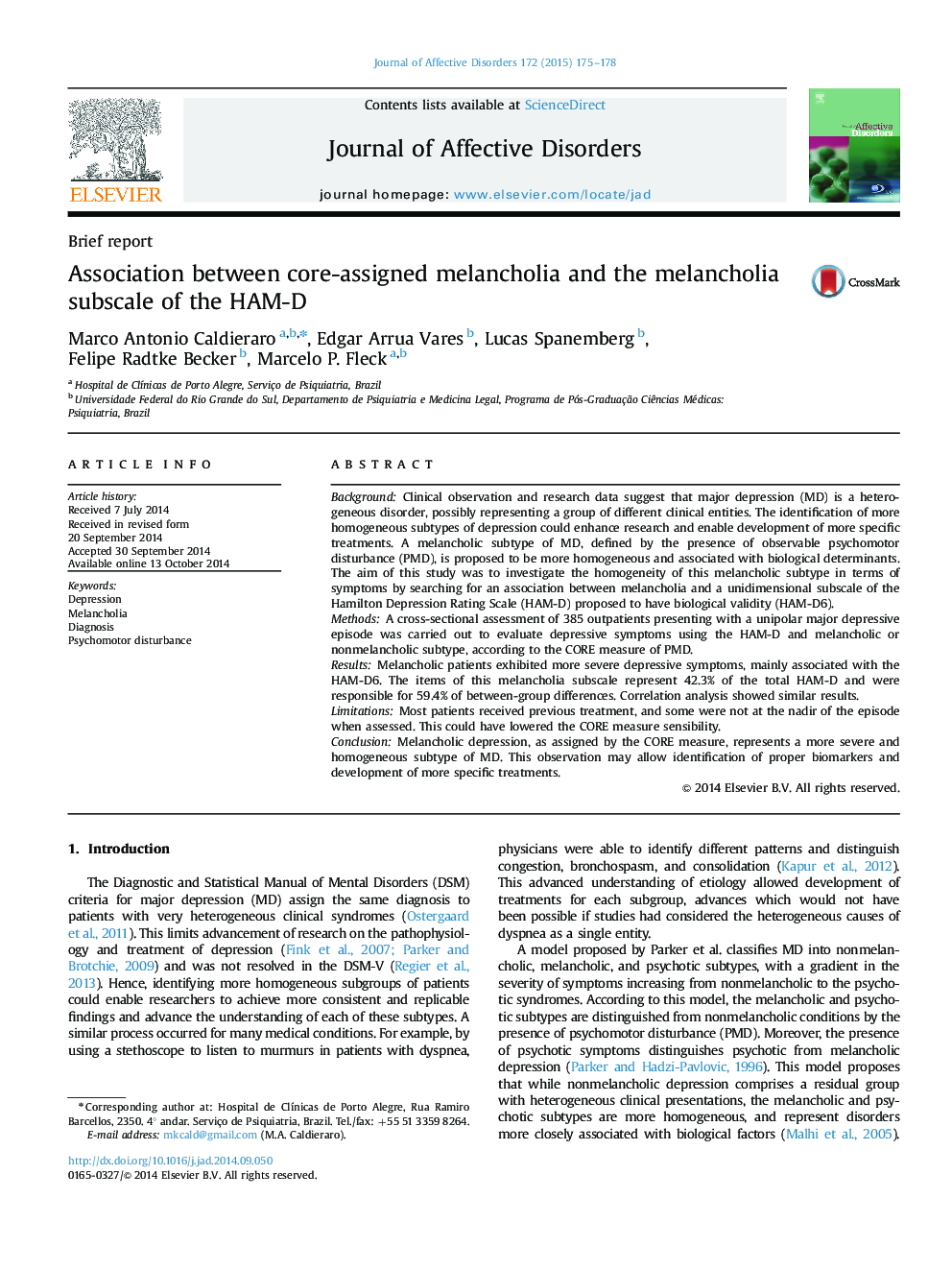| Article ID | Journal | Published Year | Pages | File Type |
|---|---|---|---|---|
| 6232259 | Journal of Affective Disorders | 2015 | 4 Pages |
BackgroundClinical observation and research data suggest that major depression (MD) is a heterogeneous disorder, possibly representing a group of different clinical entities. The identification of more homogeneous subtypes of depression could enhance research and enable development of more specific treatments. A melancholic subtype of MD, defined by the presence of observable psychomotor disturbance (PMD), is proposed to be more homogeneous and associated with biological determinants. The aim of this study was to investigate the homogeneity of this melancholic subtype in terms of symptoms by searching for an association between melancholia and a unidimensional subscale of the Hamilton Depression Rating Scale (HAM-D) proposed to have biological validity (HAM-D6).MethodsA cross-sectional assessment of 385 outpatients presenting with a unipolar major depressive episode was carried out to evaluate depressive symptoms using the HAM-D and melancholic or nonmelancholic subtype, according to the CORE measure of PMD.ResultsMelancholic patients exhibited more severe depressive symptoms, mainly associated with the HAM-D6. The items of this melancholia subscale represent 42.3% of the total HAM-D and were responsible for 59.4% of between-group differences. Correlation analysis showed similar results.LimitationsMost patients received previous treatment, and some were not at the nadir of the episode when assessed. This could have lowered the CORE measure sensibility.ConclusionMelancholic depression, as assigned by the CORE measure, represents a more severe and homogeneous subtype of MD. This observation may allow identification of proper biomarkers and development of more specific treatments.
